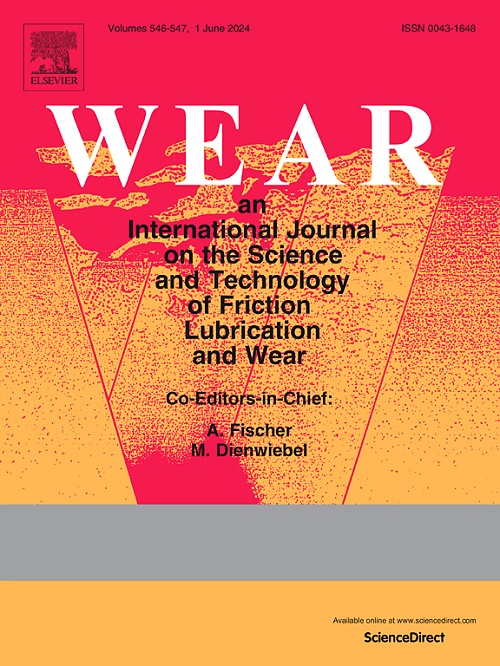Influence of bulk post processing techniques on anisotropy of microstructural and tribological properties of L-DED produced Ti64 alloy
IF 5.3
1区 工程技术
Q1 ENGINEERING, MECHANICAL
引用次数: 0
Abstract
Laser-Direct Energy Deposited (L-DED) Ti64 alloy is known to have high anisotropy, and low wear resistance which reduce the longevity of artificial bone joints. Thus, the primary objective of this study is to compare and contrast the effect of bulk treatments to mitigate these inherent limitations. Keeping printing parameters constant, the printed samples were put through different post-treatments, namely, super-β annealing (1050 °C, 1 h) and deep cryogenic dipping (−196 °C, 48 h). Electron back scatter diffraction (EBSD) and x-ray diffraction (XRD) analysis revealed differences in grain morphology and phase distributions in the treated samples. A linear reciprocating wear test is conducted with Al2O3 as the counter body to mimic the artificial hip socket. The super-β annealing process reduced the anisotropy in wear rate from 76 % to 60 % but did not show an overall betterment. On the other hand, the cryo-treatment showed an 83 % reduction in wear and a slight reduction in anisotropy compared to the as-build sample. The coefficient of friction (COF) plots also displayed an increase for annealed samples (15.4%–31.5 % higher) while showing a major reduction in cryo-treated samples (42.8%–54.7 % reduction).
批量后处理技术对 L-DED 生产的 Ti64 合金微观结构和摩擦学特性各向异性的影响
本文章由计算机程序翻译,如有差异,请以英文原文为准。
求助全文
约1分钟内获得全文
求助全文
来源期刊

Wear
工程技术-材料科学:综合
CiteScore
8.80
自引率
8.00%
发文量
280
审稿时长
47 days
期刊介绍:
Wear journal is dedicated to the advancement of basic and applied knowledge concerning the nature of wear of materials. Broadly, topics of interest range from development of fundamental understanding of the mechanisms of wear to innovative solutions to practical engineering problems. Authors of experimental studies are expected to comment on the repeatability of the data, and whenever possible, conduct multiple measurements under similar testing conditions. Further, Wear embraces the highest standards of professional ethics, and the detection of matching content, either in written or graphical form, from other publications by the current authors or by others, may result in rejection.
 求助内容:
求助内容: 应助结果提醒方式:
应助结果提醒方式:


